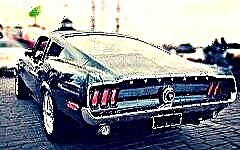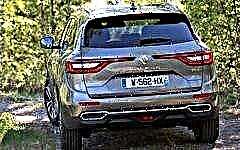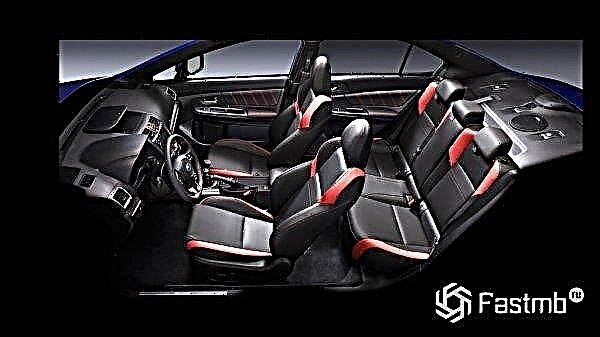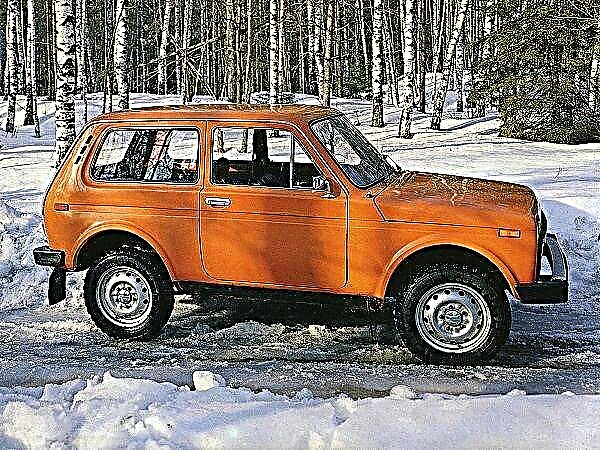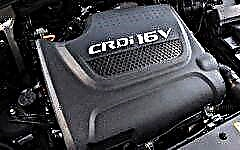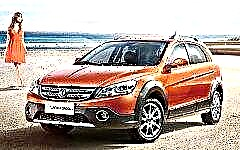

The content of the article:
- History of the Chinese car industry
- Automotive production in China today
- Advantages of cars from China
- disadvantages
Not so long ago, the phrase "Made in China" for a Russian motorist meant absolutely nothing, or at least caused a smile or slight bewilderment. But over the past 10 years, the situation has changed dramatically, and cars from China have literally flooded the domestic market, noticeably "eating away" sales from more eminent European and Japanese brands.
Moreover, some Chinese models are in particularly high demand and for the past few years have regularly been included in the TOP-20 of the most sold cars in the world. Nevertheless, domestic consumers are still skeptical about Chinese automobile production, arguing their position on the low quality, fragility and insecurity of cars from the PRC.
But let's not "cut from the shoulder" and try to soberly figure out which of this is true and which is fiction, and form a list of the strengths and weaknesses of the "iron horses" of their China.
History of the Chinese car industry

The Chinese car industry was born relatively recently - the first car was released in 1954, and it was a truck, created under the license of one of the popular Soviet models. Even then, Chinese engineers decided not to look for complicated ways, but to concentrate on copying the time-tested and popular models in the CPCP.
After a while, following the copies of Soviet cars, copies of popular American and Japanese cars began to appear in China.
The full-fledged heyday of the Chinese car industry took place in the late 90s of the last century, and it was not without direct intervention of the state, which not only established a 100% duty on imported foreign cars, but also obliged world automakers wishing to enter the local market to open joint ventures with Chinese companies of the enterprise.
In addition, foreign companies had to share their own developments in the automotive industry, which allowed China to evolve in the shortest possible time and make the world community reckon with itself. The Qoros 3Sedan, which received the maximum 5 stars in the EURO NCAP crash tests, and the recently unveiled BYD Tang crossover hybrid, whose dynamic performance exceeds the capabilities of the Porsche Cayenne S E-Hybrid, are just a few of them!
True, the Chinese car industry was not doing as smoothly as the local authorities wanted. The fact is that in the pursuit of the low cost necessary to compete with European, Korean and Japanese automakers, Chinese companies everywhere saved on materials and assembly, which caused rejection from potential buyers. As a result, Chinese automakers had to reconsider their position not only regarding quality, but also regarding the design of their models, which led to cooperation with well-known design studios, including Guingaro, Fioravanti and Pininfarina.
Automotive production in China today

So, the Chinese auto industry does not stand still and is constantly developing, and on such a scale that in 5-10 years, companies from the Middle Kingdom will be able to compete on equal terms with the world's best automakers. Already today, Chinese automakers en masse lure the best American and European engineers, marketers and designers, whose work we can already observe in the lineup of such companies as Chery, BYD, Lifan, Geely, Great Wall, Brilliance and FAW, which are widely represented on the Russian market.
Nevertheless, for most car owners who want to get a new car, the question of choosing products from the Chinese car industry remains open, so let's look at the main advantages and disadvantages that cars from the Middle Kingdom have.
Advantages of cars from China

Most modern cars manufactured by Chinese companies have the following advantages:
- Price - perhaps one of the strongest trump cards that cars from the PRC can boast. So, the price tag for the "Chinese" starts at 360 thousand rubles. for a car and about 540 thousand for a crossover, which is at least 20% cheaper than the products of "budget" Koreans. It is also worth noting the low cost of car maintenance (spare parts, repairs, technical inspection).
- Equipment Is another argument in favor of choosing products from Chinese automakers. The fact is that already in the basic equipment, most of the "Chinese" are equipped with everything necessary - from front airbags, full power accessories, music and climate system, and ending with an anti-lock system, a hydraulic booster and light-alloy wheels. And by paying a little more, the buyer can count on a complete "stuffing", represented by leather trim, a rear view camera, parking sensors, LED optics, climate control, electrically adjustable seats and even a panoramic roof.
- Verified components and assemblies... Most Chinese brands install components and assemblies on their cars that are licensed from the best car manufacturers. So, many cars are equipped with engines from Mitsubishi, Toyota and even Mercedes, as well as a number of units and elements certified by Suzuki, Isuzu and Nissan. True, it is worth noting that we are talking about technologies 5-10 years ago, which leaves its mark on the dynamic and operational characteristics of the car.
- Adaptation to operating conditions in Russia... As a rule, Chinese companies adapt their models to the conditions of Russian roads, climate and fuel, which is an undoubted advantage in comparison with used cars, fitted and sharpened for operation, for example, in Europe, where there is no doubt about the quality of roads and fuel.
- Design... Recently, Chinese carmakers increasingly resort to the services of specialized design studios or hire their own designers who create cars with their own "face" corresponding to modern fashion, which is an undoubted advantage in comparison with cars that were 10-20 years old.
And the last thing - a new car, whatever one may say, is much better in most parameters than a used and well-worn car 15-20 years ago, which could change a dozen owners and be in an accident. Moreover, after buying a used car, the new owner will have to additionally invest in replacing outdated or damaged components and assemblies.
Disadvantages of cars from the PRC

Of course, despite a number of advantages, Chinese cars also have disadvantages, including:
- Quality of materials and assembly... No matter how much I would like to praise the Chinese, the quality of the materials they use and the fit of parts, in comparison with European and Japanese automakers, in 70% of cases leaves much to be desired. Nevertheless, according to these parameters, the "Chinese" are not only not inferior, but also superior to the products of domestic companies.
- Security... Despite the fact that most cars from China already have a "gentleman's" set of security systems in basic equipment, the quality of the body itself raises questions. True, even the Chinese have cars that have successfully passed the EURO NCAP crash tests, including the Qoros 3 sedan, Geely Emgrand and others.
- Low selling price in the secondary market... If the owner of a Chinese car asks about selling it, it will be much more difficult to do so than if it was a 5-10 year old "European" or "Japanese", while he should be prepared for a more significant loss in price.
- Mediocre after-sales service... Of course, this is a matter of time, but today only a few car manufacturers in the Middle Kingdom can boast of having a wide service network in the Russian Federation, which imposes a number of inconveniences arising from this in the operation of the car (search for spare parts, repairs, maintenance).
Summing up
The number of Chinese cars in Russia is steadily increasing from year to year, and their main buyers are the owners of domestic "cans" and "rare" foreign cars, unable to boast of not only reliability and design, but also comfort. In this case, buying a "Chinese" will be like a breath of fresh air, but if you compare it with the new budget cars of European and Korean manufacturers, the answer will not be so obvious.
Therefore, before purchasing a new car, we strongly recommend that you determine the available budget and familiarize yourself with the possible options for the Korean, Japanese, European and Chinese car industries, because at a comparable cost to the first, the "Chinese" can offer comparable quality and assembly, but a deeper list of equipment. And then everyone decides for himself ...



